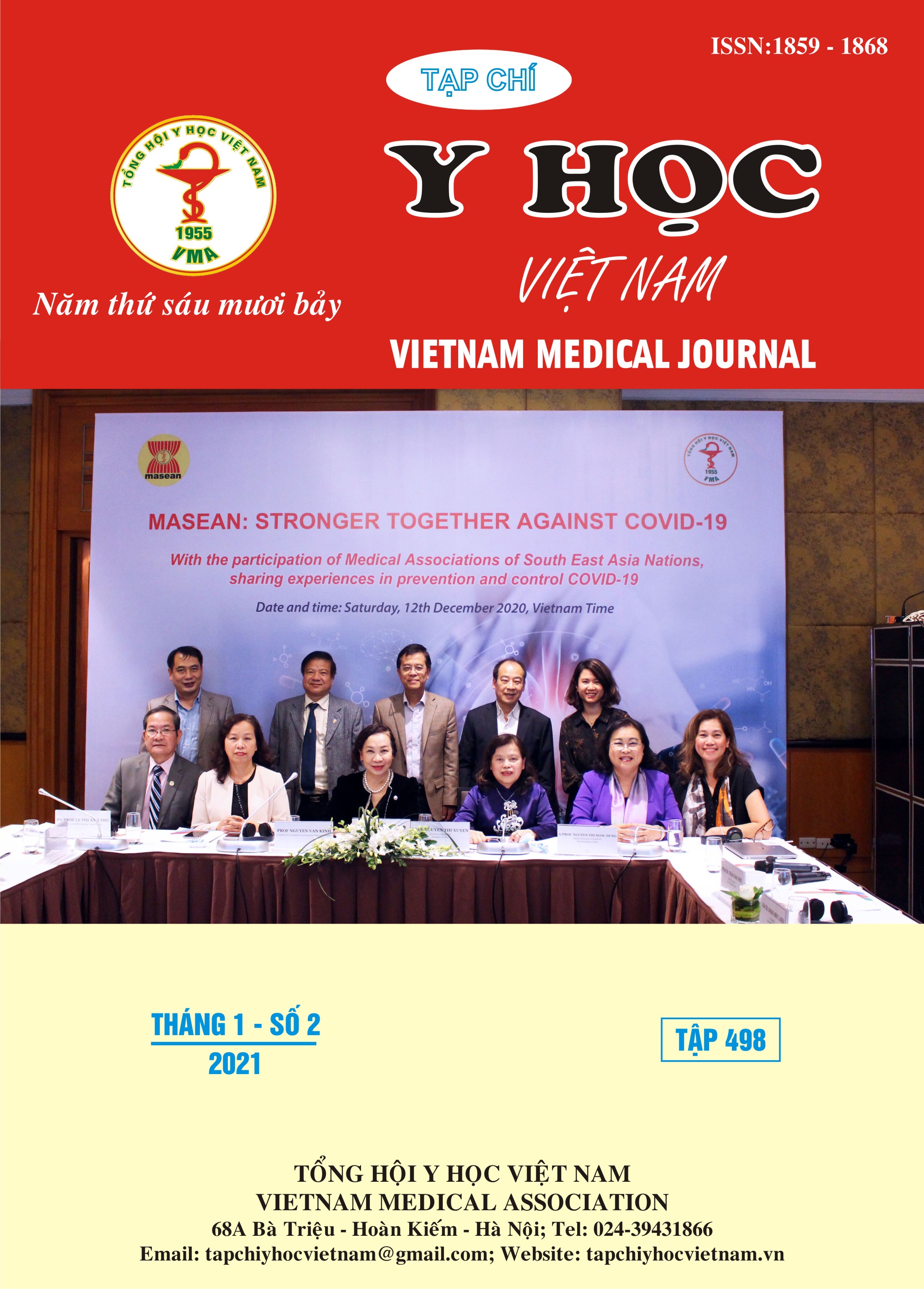AN ANALYSIS OF THE CURRENT SITUATION OF ADVERSE DRUG REACTIONS REPORTING IN BACH MAI HOSPITALDURING THE PERIOD 2013 – 2019
Main Article Content
Abstract
Objective: To investigate the current practices regarding adverse drug reaction (ADR) reporting in Bach Mai Hospital during the period 2013 – 2019. Subjects and methods: Cross-sectional descriptive of ADR reports registered in The National Drug Information and Adverse Drug Reactions Monitoring Centre from 2013 to 2019. Result: There was a total of 2.102 ADR reports during the seven year period. The number of monthly ADR reports tended to decrease (α=-0.03), however, not significantly (p=0.587). Meanwhile, the number of monthly spontaneous ADR reports climbed slightly (α=0.013, p=0.656). The ADR per 1000 people rate was 2.13. The majority of ADR reporters were doctors (58%) and only 20.3% were made by pharmacists which increased accordingly active surveillance. There was a 62% good quality ADR reports and the mean point of whole time was 0.79. Antibiotics, antipsychotics drugs and contrast media were the most common related medications. The most frequently reported ADRs were associated with skin and subcutaneous tissue disorders such as rash erythematous, pruritus and rash. Conclusion: Result of this study showed that the number of ADR reports was higher in compare with others but still inadequate compared to the large scale and potential of the hospital. ADR monitoring, detection and reporting had been unsteady, and the involvement of clinical pharmacists was still limited. Therefore, more effective solutions should be taken to enhance ADR surveillance activities, particulary through clinical pharmacy interventions.
Article Details
Keywords
Bach Mai hospital, adverse drug reactions, spontaneous reporting
References
2. Nguyễn Hoàng Anh và cs. (2015), "Khảo sát phản ứng dị ứng liên quan đến Allopurinol trong cơ sở dữ liệu báo cáo ADR tại Việt Nam giai đoạn 2006-2013", Tạp chí Y học thực hành, tr. 106-110.
3. Trần Nhân Thắng và cs. (2018), "Thực trạng hoạt động báo cáo phản ứng có hại của thuốc tại bệnh viện Bạch Mai giai đoạn 2013 - 2017", Tạp chí Y học lâm sàng, tr. 70-80.
4. Kohn L. T., Corrigan J. M., Donaldson M. S., (2000), "To Err is Human: Building a Safer Health System", Institute of Medicine Committee on Quality of Health Care in America, Washington (DC), pp. 26-48.
5. Marques J., Ribeiro-Vaz I., et al. (2014), "A survey of spontaneous reporting of adverse drug reactions in 10 years of activity in a pharmacovigilance centre in Portugal", Int J Pharm Pract, 22(4), pp. 275-82.
6. Nguyen K. D., Nguyen H. A., et al. (2019), "Drug-Induced Anaphylaxis in a Vietnamese Pharmacovigilance Database: Trends and Specific Signals from a Disproportionality Analysis", Drug Saf, 42(5), pp. 671-682.
7. Patton K., Borshoff D. C. (2018), "Adverse drug reactions", Anaesthesia, 73(S1), pp. 76-84.
8. Shin Y. S., Lee Y. W., et al. (2009), "Spontaneous reporting of adverse drug events by Korean regional pharmacovigilance centers", Pharmacoepidemiol Drug Saf, 18(10), pp. 910-5.


